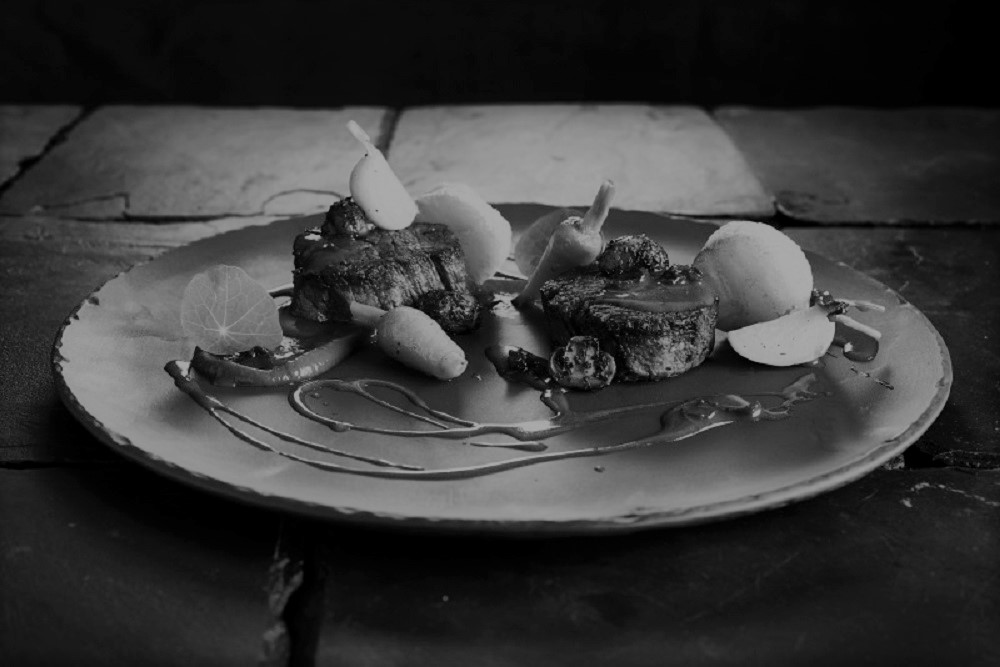Developing Your First Restaurant Menu
Originally Posted on FoodableTV – By Doug Radkey 11/09/2016
Designing your restaurant’s first menu should be a fun and exciting task, but it is also a potential turning point for your venue’s long-term success. A process this significant needs to be a thought-provoking one, and one with thorough planning.
There needs to be a strategy behind your menu, not only with food, but also beverages. Every plate, bowl, and glass delivered to each table and to every guest needs to deliver a visible, positive emotion. If it doesn’t, you and your team will have some crucial work to do.
The process to developing your first, memorable menu starts here:

The Concept
If you’ve developed a conceptual plan for your new restaurant or bar, you would have shaped your idea into a tangible form with character, heart, and soul, giving your concept a visual personality. Using these characteristics will help you to define the style and size of your first menu.
Target Customers
If you’ve completed a feasibility study and business plan, you will undoubtedly know who your target customers are. One of the first steps in menu development is simply knowing what your customers want and how much it is they’re willing to spend for a meal, away from home, based on their chosen lifestyles. The mistake many aspiring restaurateurs make is designing a menu they want, not what their customers want, which often leads to early challenges or failure.
Competitive Analysis
At this stage of the process, you will now know the fundamentals of your menu and who will be your direct and indirect competitors. Take your research to the next level and analyze your direct competitors in terms of their menu. Look for menu size, menu style, day-part strategies, portion sizes, ingredient quality, and price points.
Economic Factors
Complete a SWOT (Strengths, Weaknesses, Opportunities, Threats) analysis to determine the opportunities that present your concept, based on the research from your target customers and competitive analysis. You want to list 5-10 potential opportunities and prioritize them in a way that will deliver a winning menu for your concept.
Ingredients and Items
Which menu items will define your brand and your success? What quality of ingredients will you need to use? How can you re-purpose ingredients to maximize supplier buying power in addition to reducing waste plus your food & beverage costs? What will be your nutritional and flavor profile based on your target customers? How will you maximize productivity within your venue? Remember, you want to keep your menu small (ideally less than 32 items), memorable, and easy to navigate.
Culinary Experience
What experience do you need in your kitchen and bar to deliver your desired menu items on a consistent basis? What roles or specific qualifications will you need? What is the starting salary for these types of positions? What is the personnel availability like within your region for these qualifications?
Vendor Selection
Having the right vendors is an essential key to success, especially if you’re producing much of your menu in-house. You need to ask if they’re in a position to consistently deliver the quality product and ingredients you need each and every time. Do they only deliver on specific days? If yes, how will it store in your kitchen? Do the vendors have quality control and recall systems in place? Can they grow with your brand in terms of quantity? Will suppliers and ingredients need to change based on seasons?
Pricing Strategy
How will you position your concept and menu within the market? Do you want to be a leader in value and quality, or are you reaching a specific high-income or low-income demographic? What is the economic state of your hyper-local area and target customers? What are your prime food and beverage costs? Take this time to re-examine your proposed pricing, portions, and menu quality against your competitors.
Kitchen Layout
Now that you know the core of your menu, you can plan for the kitchen equipment, bar equipment, square footage needed, and productive layout of your stations. You will want to work with an engineer plus an experienced chef, consultant, or equipment supplier to maximize your productivity, storage, and revenue per square foot.
Plating and Glassware
Presentation is equally as important and will help deliver the “wow factor” when a plate, take-out container, or drink is delivered to the guest. Put passion, excitement, and care into each dish or beverage, even for take-out. Look for innovative plate, to-go, and glassware designs while keeping into consideration your portions and the color palette of your menu items.
Marketing and Engineering
Your menu is the number one form of marketing — without it, you have nothing. You want to artfully describe the story behind your brand and each one of your dishes with powerful, meaningful descriptive that will match the physical design of your menu. Using winning menu placement, product mix, and other engineering strategies that will deliver a consistently high level of revenue and profit for your restaurant or bar.
Training and Soft Opening
Create a menu training schedule for both, prior to opening period and for your future day-to-day operations. Take advantage of soft openings to make any last-minute adjustments and don’t forget about ongoing menu training for not only the back-of-house, but the front-of-house staff as well. Create inventory systems and pull-lists plus in-house quality control systems for all menu items to promote financial control.
Utilize these steps and answer these questions to develop a documented menu strategy that you can use not only for your first menu, but future menu developments as well.
